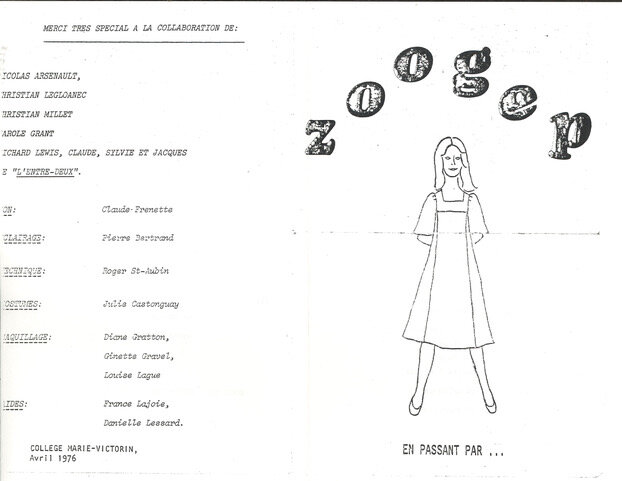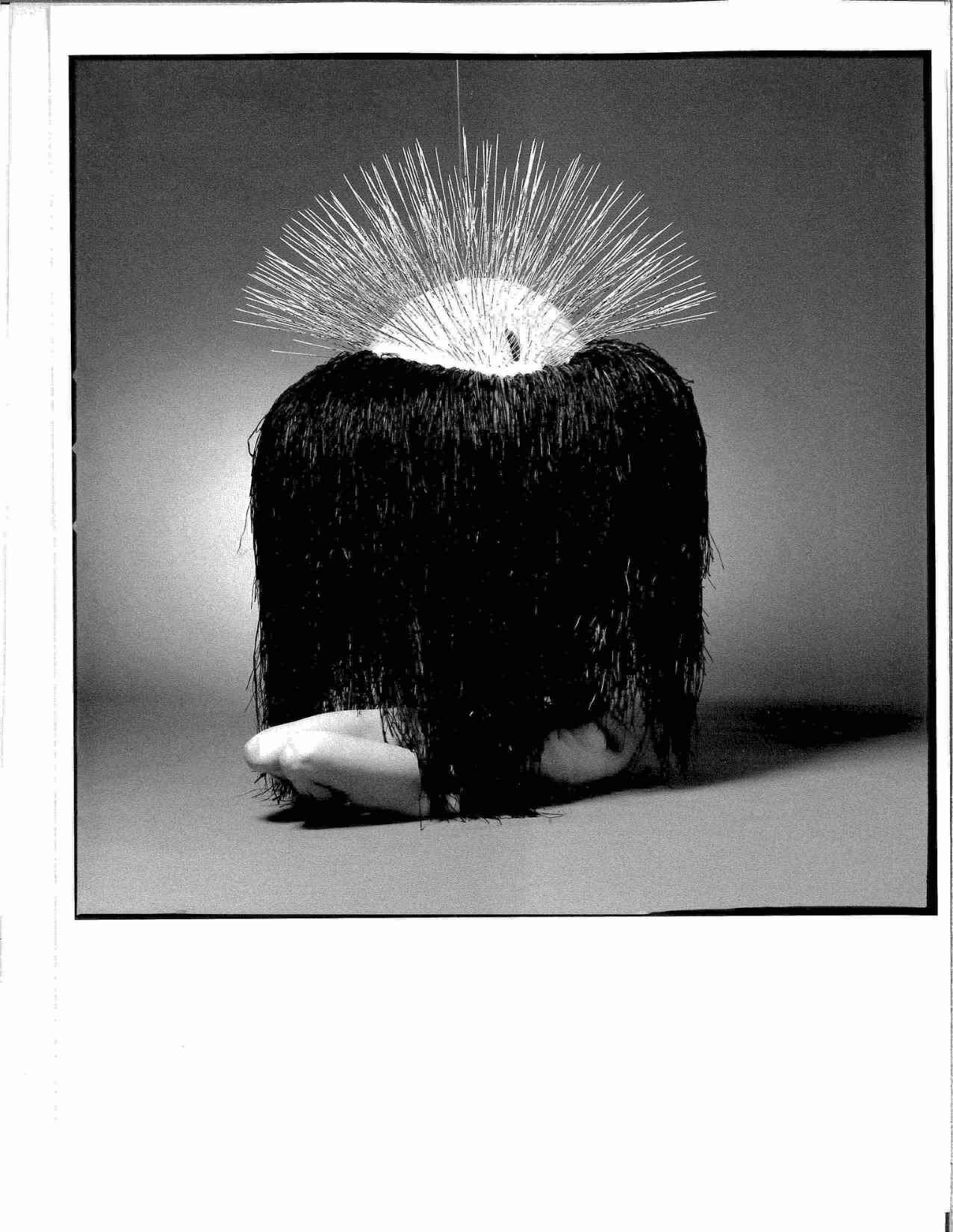Dancing in Every Direction – How I Arrived Here
I was born into a francophone family and raised in Montréal. Québec was home the first twenty years of my life. Even after years of traveling the world and living in Toronto, Montréal remains my true home. And now on with the story.
Movement was part of growing up. My mother was a naturally good dancer and she used to teach me basic dance combinations - a bit of cha cha cha, salsa, or jive moves - during family parties. When she felt good, she danced and included me in it. Her natural capacity for performance took root in me at an early age. There are short films of our family that I recently discovered and you can see me always performing for the camera, dancing away and entertaining my parents, brother, aunts and uncles, running (badly as still is the case today), or playing football with my cousins.
My brother and I were well taken care of, but life was not always grand. My father was dedicated to his children’s education: I attended boarding schools and was educated in a strict classical studies curriculum. There was not much exposure to the arts, but my father did, however, invest in private ballet classes for me at age seven. I don’t recall that it was something I wanted to do but perhaps he thought it would be a nice activity for me.
My first ballet lessons happened weekly in a basement studio owned by Roland Duval on the street behind our home. Occasionally, the teacher taught ballet movements at the barre but, mostly, I spent the time drawing ballerinas on the blackboard while he spent the time upstairs in his kitchen. One day, my father arrived early to pick me up and was aghast to see that drawing had replaced dancing. These were not the lessons he paid for!
My ballet training was transferred to Les Grands Ballets Canadiens who ran satellite classes in Ahuntsic (north part of Montréal) in an upstairs studio in a strip mall. To my surprise, these new classes did not include drawing and, even worse, I learned this ‘new’ version of ballet class made everyone dance the same way. To my father’s surprise, I quit.
Boarding school was extremely strict and we were not allowed to speak in class, in the dormitory, in the cafeteria and, of course, never in the chapel. Needless to say, when permitted, I became very animated (silence didn’t suit me). I excelled in Latin and English languages. Aside from singing briefly in a girls’ choir - taking both soprano and alto parts – artistic activity at school was scant. There was no music, no visual arts, no dance. To escape from the burden of hours of homework every night, I found amusements. At age 10, I used to dance with a tennis racket to Honky Tonk Woman in a little recreation room at the boarding school. But only until the nuns chased me out!
One exception at l’Institut Marie-Clarac had a huge impact on my life. I had my first glimmer of real artistic experience with the arrival of the only male person allowed into the school (except for our dedicated priest). This young actor was hired to bring ‘artistic experience’ to the students. A small group of us were allowed this special class from 4:30 to 5:30 every Thursday. He bravely led us through theatre, dance and visual art exercises that culminated in a performance in the gym. The details have receded in my memory, but I remember coming alive. I loved it. All of it.
Other artistic inspirations began to present themselves. When I was 15, Eva von Gencsy arrived in Canada and founded Les Ballets-Jazz de Montréal. I cannot remember how I discovered the classes - or who suggested I try them - but I became a regular. Every Friday night at 6pm, I boarded the bus at Saint Jacques de Montcalm (Collège Esther-Blondin) and arrived in downtown Montréal, then caught the subway to Papineau station and walked east on St-Catherine. I was alone and needed to pass under the Jacques Cartier bridge and through an alley to get to the back door of the studio. Looking back, I realize how dangerous that was, as the studio was located in a very rough part of Montreal. Class started at 8:30pm. At 10pm I made my way back north to Laval-des-Rapides where I lived.
With the end of boarding school, came a new focus.
Image by Frederic Georges
At 16, I entered Cégep Marie-Victorin to study preschool education. A brand new three-year program, I was part of the very first cohort of students. In addition to intense study, writing, and working in the field, I continued dancing. I enrolled in recreational classes because I could not yet imagine that dance and art would be the work of my life.
By second year, at age 17, I found myself dreading the final terms papers required for psychology and philosophy. So I proposed to my instructors that, instead of writing, I would create a dance performance to explore the tension between children and adults. To my surprise, the instructors agreed!
I prepared for a year, setting lunch time rehearsals, teaching the ‘moves’ I’d learned in my dance classes and engaging all the theatrics. I persuaded some students to coordinate costumes and makeup while I designed the set, and chose music. The production was entitled Zoogep (because CEGEP is a zoo!) and ran for 50 minutes. I had acquired the personal phone number (from our Cegep counsellor) for the noted Québec composer François Dompierre - (composer of the iconic québécois song ‘On est six millions faut s’ parler) - as I had choreographed the full production to some musical tracks from his album entitled Dompierre and invited him to attend the show. He accepted, showed up and loved it; we hung out afterwards with the full cast at a restaurant. The first of many such nights in my life.
When I think about it now, it’s clear my first focus was choreographing and directing before I even knew how to dance.
It was 1976 and Montréal was hosting the Summer Olympics. During the day, I worked as an usher for the Weightlifting competitions. Winner Vassili Alexeiev celebrated his victory at a press conference by hugging me in front of the cameras, and nearly crushed me to death, all 95 pounds of me. I wish I could find that photograph.
And at night, I rehearsed – midnight to 4am – in the Stade Olympique for the closing ceremonies in which I danced as well as guiding the athletes to their respective stations during the celebration. It was an overwhelming experience.
My path was becoming clearer. I completed my CEGEP studies. But even with a diploma and job offer in hand, I knew I did not want to continue in the field even if I loved working with children.
My fate appeared to me in a newspaper. It was an ad for Pointépiénu, a brand new school that offered theatre, ballet, modern, rhythm, voice, Alexander technique and physical theatre. I was the very first student to enrol!
Situated in the heart of Old Montreal, Pointépiénu started as a small company of three dancers: Sasha Bélinsky, (a principal dancer with Les Grands Ballets Canadiens); Anthony Bouchard (a former soloist with Maurice Béjart’s Les Ballets du XX siècle), and Louise Latreille, the artistic director of Pointépiénu. She had studied with Béjart and modelled her new school’s curriculum after Béjart’s institution Mudra in Brussels (which later became P.A.R.T.S.).
At age 19, I began my full time dance training. I had everything to learn, especially technical ability, but I brought lots of determination, performing energy and a great desire to be part of the company.
I joined Pointépiénu as an apprentice company member and initially performed in the more theatrical roles while I augmented my training. The school of Pointépiénu gave me incredible tools. I received excellent training with exceptional teachers in many artistic disciplines. We had contemporary music appreciation class with Micheline Coulombe St-Marcoux (a pioneer of electro-acoustic music), classes in physical theatre with Gilles Maheu (founder of Carbone 14), setting up a school show with Michel Lemieux (Lemieux Pilon 4D Art), designing the lighting in our little studio. The list of artists and influences is long and rich. In addition to classes at the school, I pursued intensive dance workshops in the United States at New York University (NYU) and Jacob’s Pillow Dance Festival and a summer program at York University (Toronto).
Image by George Belinsky. Performers: Marie-Josée Chartier, Sasha Belinsky in Initiation
During my five years in the company, I had the opportunity to perform regularly. We toured extensively in France and Belgium for six weeks every year, performing in great theatres, old opera houses and the newly formed Maisons de la Culture in France. Louise Latreille and I led workshops and lecture demonstrations in schools, factories, conservatories of every town we visited.
In 1982 I left the company, my boyfriend, my family, and Montréal for personal reasons.
When I think back on this era, I realize its impact on my whole career, on everything I do. Today, I am an artistic director, I dance, I choreograph, I teach, I sing, I direct, and I am involved in the dance community in many different capacities.
Marie-Josée Chartier with sculptures by Rae Anderson for Telum Amoris
Arriving in Toronto in 1982, I enrolled in a workshop with Carolyn Adams of the Paul Taylor Dance Company, hosted by the Danny Grossman Dance Company. I expected to be in Toronto for a month. But nothing prompted me to leave and one month of workshop turned into several decades of living. Toronto welcomed me and I worked as a freelance dancer for seven years, with various choreographers, expanding still more to learn new and different kinds of performance craft.
My first choreographic experience happened by accident. In 1987, upon recommendation by my neighbour, the visual artist Rae Anderson asked me to create a dance for her gallery opening at BauXi on Dundas Street across from the Art Gallery of Ontario. It was my first significant collaboration with a visual artist and prompted my love of the contemporary arts and the desire to engage in multi-disciplinary creations.
Performers: Michael Querin, Alejandro Ronceria, Tom Brouillette, Peter Chin and, not seen here but part of R.E.D. the Mens Club, David Wood
Image by Cylla von Tiedemann
I should also mention that one of the main reasons I stayed in Toronto is that it is where, early on, I met the love of my life, the late Michael J. Baker, composer, musician, conductor and Artistic Director of Arraymusic (1992 - 1999). He taught me so much about the contemporary arts and he wrote the music for my very first full length choreographic work for five male dancers, R.E.D. the Mens Club, presented at ARC, a performance space on Queen Street West. From then on, I had the ‘piqûre’, the sting for creation.
In 1988, I joined the longstanding Toronto dance company Dancemakers, under the artistic direction of Bill James (after being part of Bill’s exquisite site-specific works), and remained with the company when Serge Bennathan took over. He is an artist whose creative life significantly influenced my own. I spent almost ten years with the company.
In 1997, I struck out on my own, to pursue my choreographing and directing projects.
And so, the story continues …










